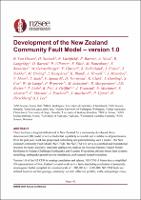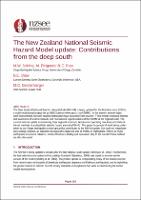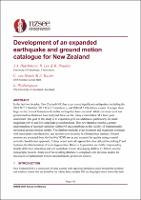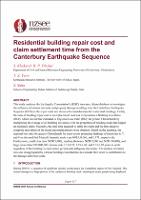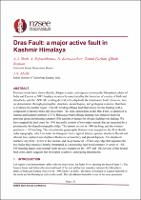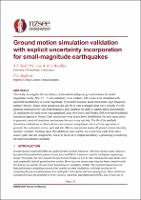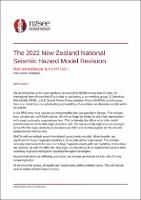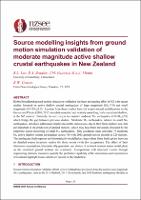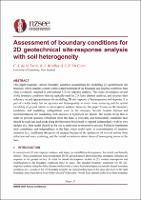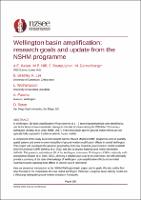Search
Now showing items 1-10 of 25
Development of the New Zealand Community Fault Model – version 1.0
(New Zealand Society for Earthquake Engineering, 2021-04-14)
There has been a long-identified need in New Zealand for a community-developed three-dimensional fault model that is accessible and available to all. Over the past year, work has progressed on building and parameterising ...
The national seismic hazard model for New Zealand: Contributions from the deep south
(New Zealand Society for Earthquake Engineering, 2021-04-14)
The New Zealand National Seismic Hazard Model (NSHM) is being updated for the first time since 2010 in a multi-institutional project led by GNS Science (www.gns.cri.nz/NSHM). In the interim, several major well-instrumented ...
Development and implications of an expanded national earthquake catalogue for New Zealand
(New Zealand Society for Earthquake Engineering, 2021-04-14)
In the last two decades, New Zealand (NZ) has experienced significant earthquakes, including the 2010 M 7.2 Darfield, 2011 M 6.2 Christchurch, and 2016 M 7.8 Kaikōura events. Amongst these large events, tens of thousands ...
Residential Building Repair Cost and Claim Settlement Time from the Canterbury Earthquake Sequence
(New Zealand Society for Earthquake Engineering, 2021-04-14)
This study analyses the Earthquake Commission’s (EQC) insurance claims database to investigate the influence of seismic intensity and property damage resulting from the Canterbury Earthquake Sequence (CES) on the repair ...
Dras Fault: a major active fault in Kashmir Himalaya
(New Zealand Society for Earthquake Engineering, 2021-04-14)
Previous works have shown that the oblique tectonic convergence between the lithospheric plates of India and Eurasia in NW Himalaya is primarily manifested by the formation of a series of fold- and thrustbelts, and the ...
Ground motion simulation validation with explicit uncertainty incorporation for small magnitude earthquakes in New Zealand
(New Zealand Society for Earthquake Engineering, 2021-04-14)
This study investigates the uncertainty of simulated earthquake ground motions for small-magnitude events (Mw 3.5 – 5) in Canterbury, New Zealand. 148 events were simulated with specified uncertainties in: event magnitude, ...
The 2022 New Zealand National Seismic Hazard Model Revision
(New Zealand Society for Earthquake Engineering, 2021-04-14)
We are embarking on the most significant revision of the NSHM in more than 20 years. An international team of more than 50 scientists is contributing to two working groups: 1) Seismicity Rate Models (SRM); and 2) Ground ...
Source modelling insights from ground motion simulation validation of moderate magnitude active shallow crustal earthquakes in New Zealand
(New Zealand Society for Earthquake Engineering, 2021-04-14)
Hybrid broadband ground motion simulation validation has been an ongoing effort in NZ with recent studies focussed on active shallow crustal earthquakes of large magnitude (Mw>7.0) and small magnitude (3.5<Mw≤5.0). Lessons ...
Assessment of boundary conditions for 2D geotechnical site-response analysis with soil heterogeneity
(New Zealand Society for Earthquake Engineering, 2021-04-14)
This paper examines various boundary condition assumptions for modelling 2D geotechnical site response, which requires a more sophisticated treatment of the boundary and loading conditions than what is typically required ...
Wellington basin amplification: research goals and update from the National Seismic Hazard Model Programme
(New Zealand Society for Earthquake Engineering, 2021-04-14)
In Wellington, 3D basin amplification effects observed at 1 – 2 second spectral periods were identified as one factor likely to have exacerbated damage to mid-rise structures during the 2016 Mw 7.8 Kaikōura earthquake ...

